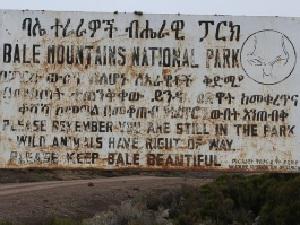Yohannes Kidane Ogubamichael
To enhance the landscape level past, present and future plant biodiversity pattern changes knowledge bases of the Bale Mountain area employing remote sensing information together with the incorporation of the main global change drivers.

Over the last half a century, it has been realized that human activities have been facilitating global change and imposing pressure on biodiversity. Of all global change drivers, the synergistic impacts of climate and land use land cover changes is the most prominent. This synergy is severed in the tropics where the climate is already warmer. There, recently native biodiversity is seriously threatened, and the ecosystem structure and function are being altered. Specially, this synergy is becoming significant biodiversity management problem in the highly populated tropical mountainous countries like Ethiopia.

Ethiopia has been settled for a very long time. Consequently, the highlands, which are human preferred habitats, are suffering from the long history of land use pressure. These mountains due to their unique geophysical location are endowed with numerous endemic flora and fauna diversity. However, recently the mountain biodiversity of the country is degrading at an alarming rate and the pristine ecosystems are getting threatened. This project is remote sensing based state-of-the-art research that will strive to assess past, present and future plant diversity patterns changes at landscape level in the Bale Mountains ecosystems.

The Bale Mountains are the largest and the globally most unique afroalpine area of above 3000m asl with high biodiversity significance. They are the largest afroalpine ecosystem of the world. They host many endemic plants and animals, yet very little is known about the historical variability and dynamics of the biodiversity patterns and drivers of pattern changes along altitudinal gradients and on the mountain tops. This project will test if distribution and abundance patterns of biodiversity vary with respect to altitudinal gradients, climate change and human induced disturbances. It will employ the temporal long, spatial broad and multidimensional information provided by remote sensing to biodiversity pattern studies. In addition, it investigates the implication of the change to plant diversity and associated fauna in the mountains and their surrounding area, Special focus will be given to linkages between the unique afroalpine habitat, grasslands, tropical rainforest and mid latitude afromontane area, and the natural, cultural and socioeconomic activities surrounding the massif. It is believed every actor in the surrounding area plays an important role in shaping the patters of the unique diversity of the massif.